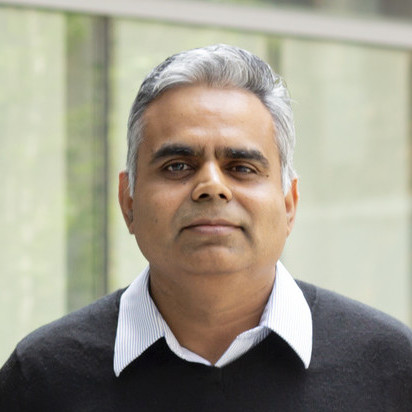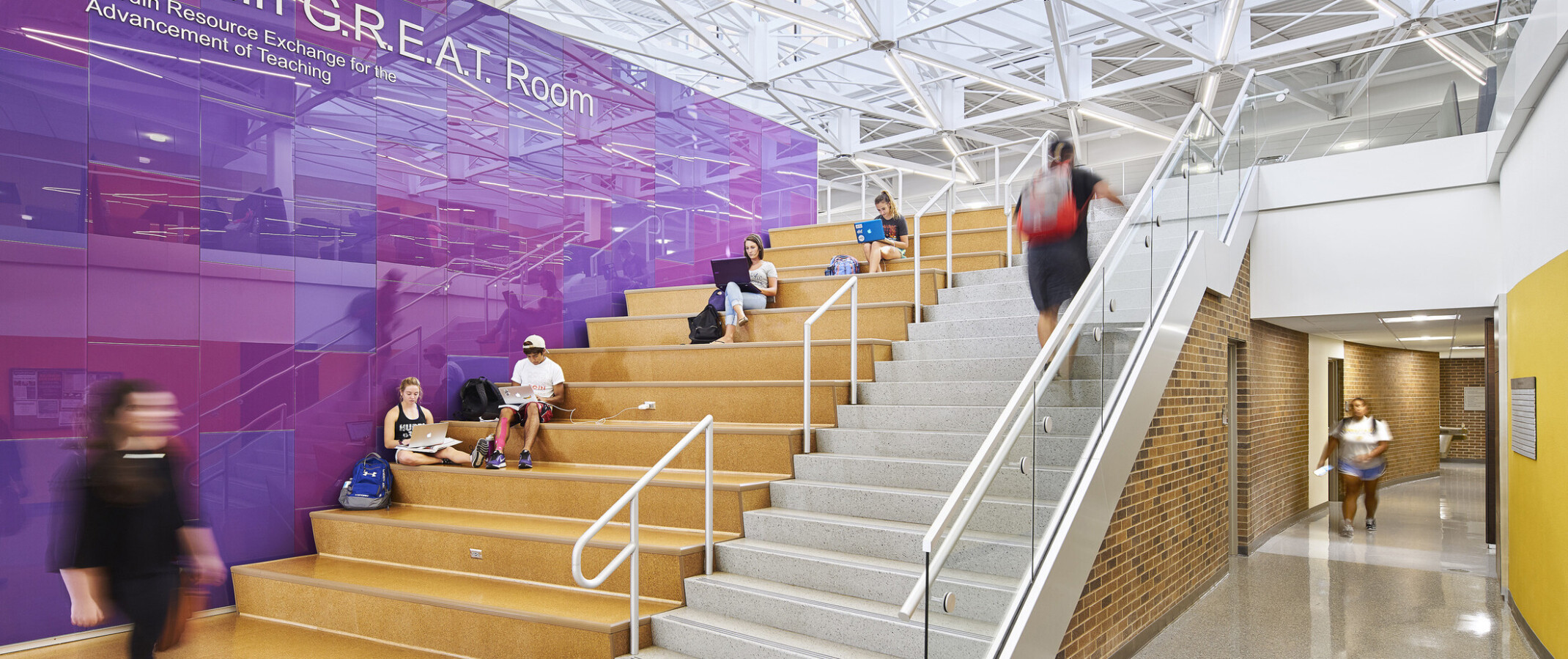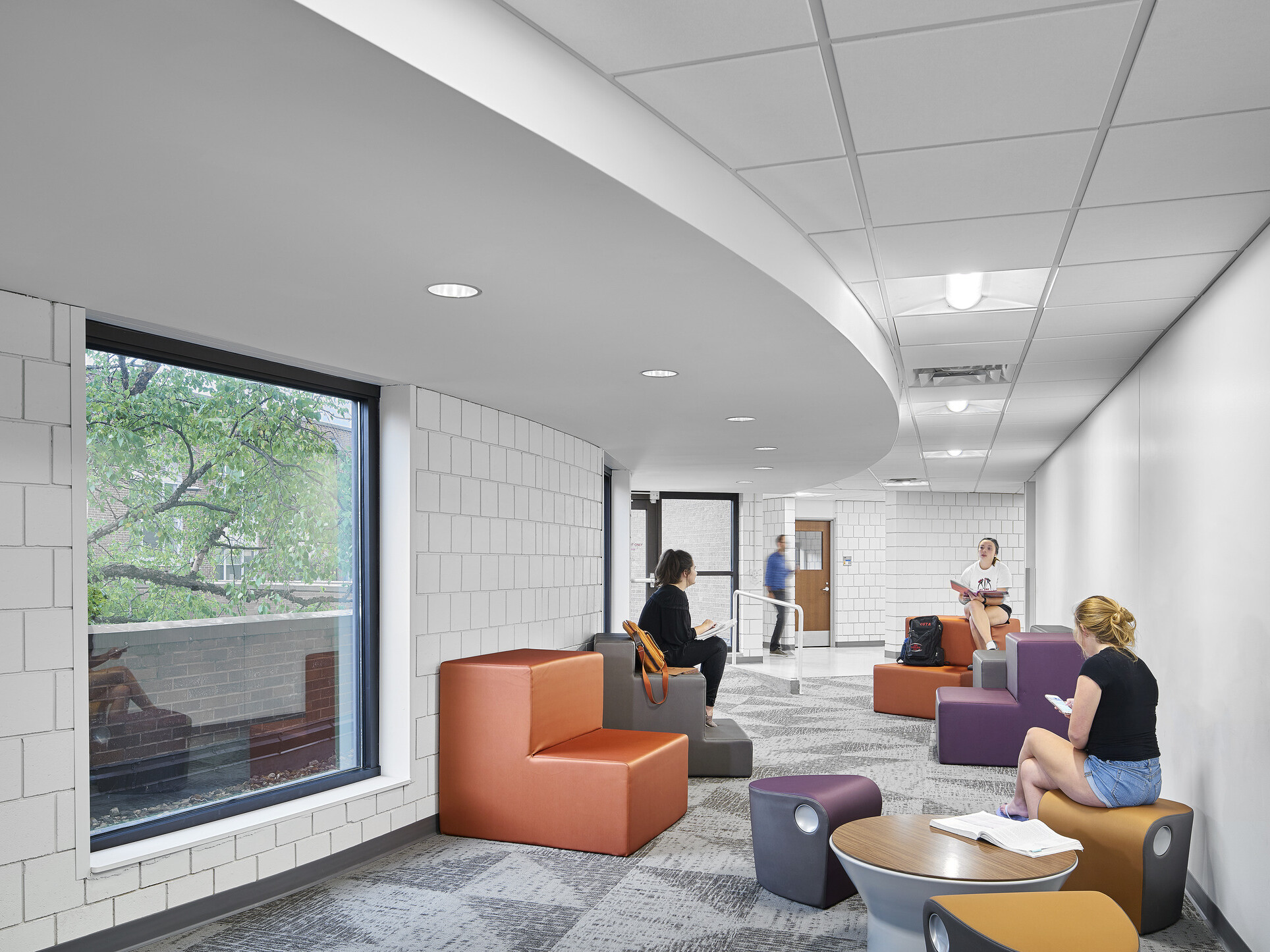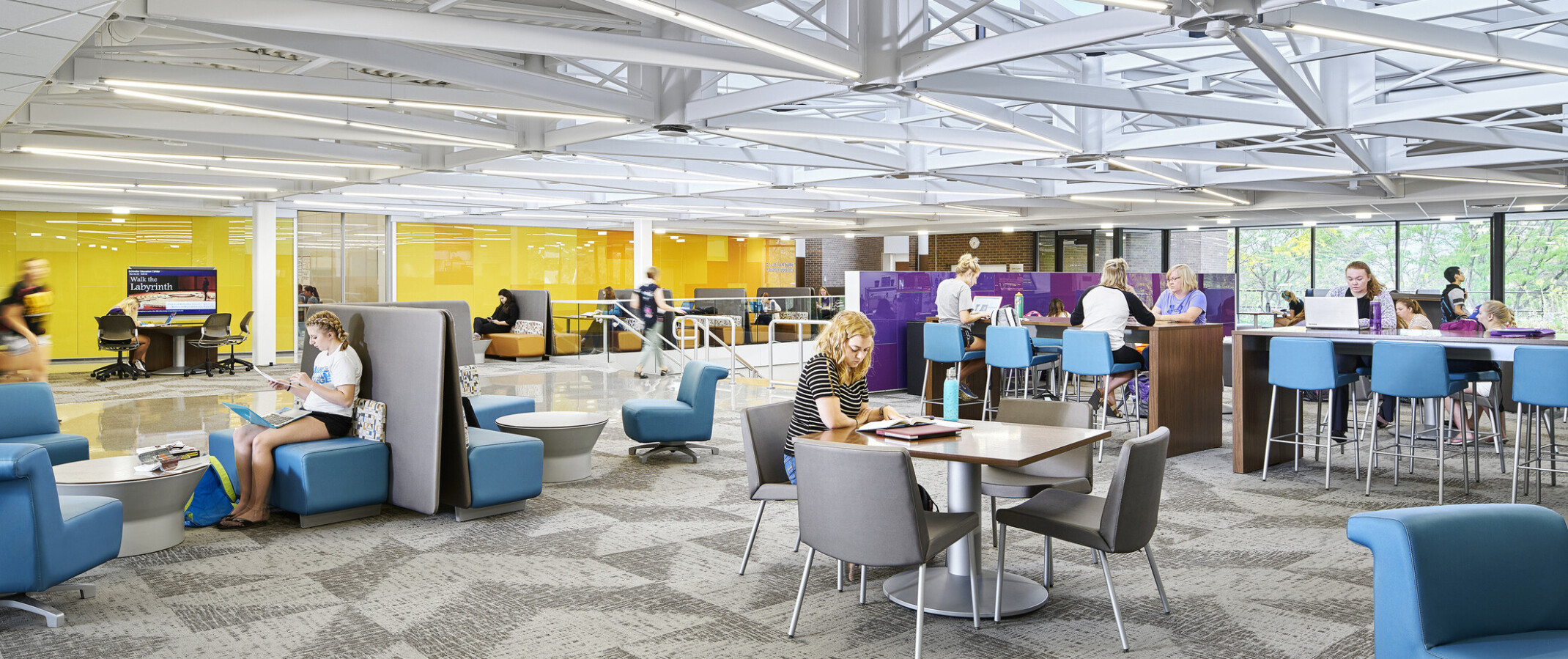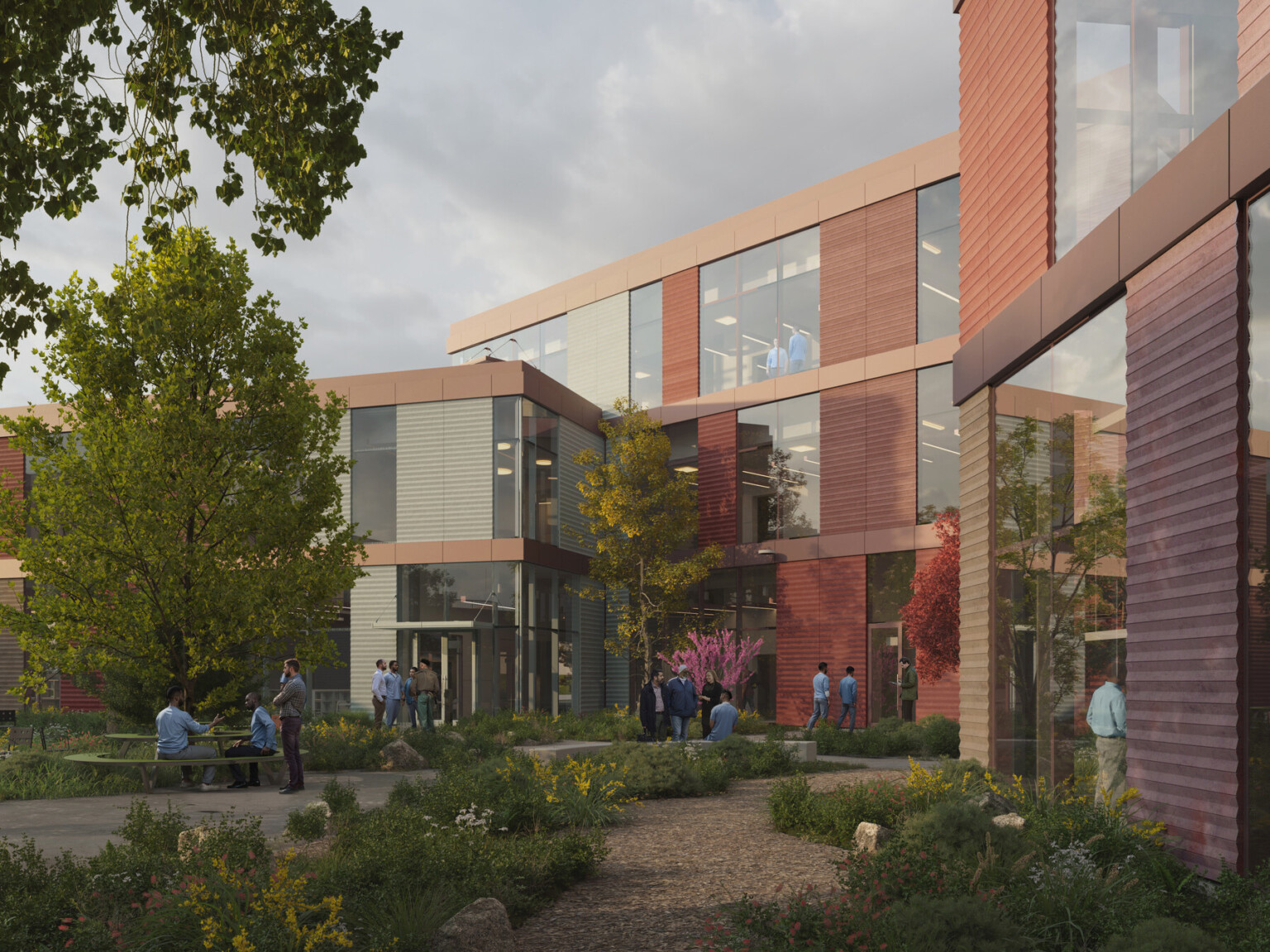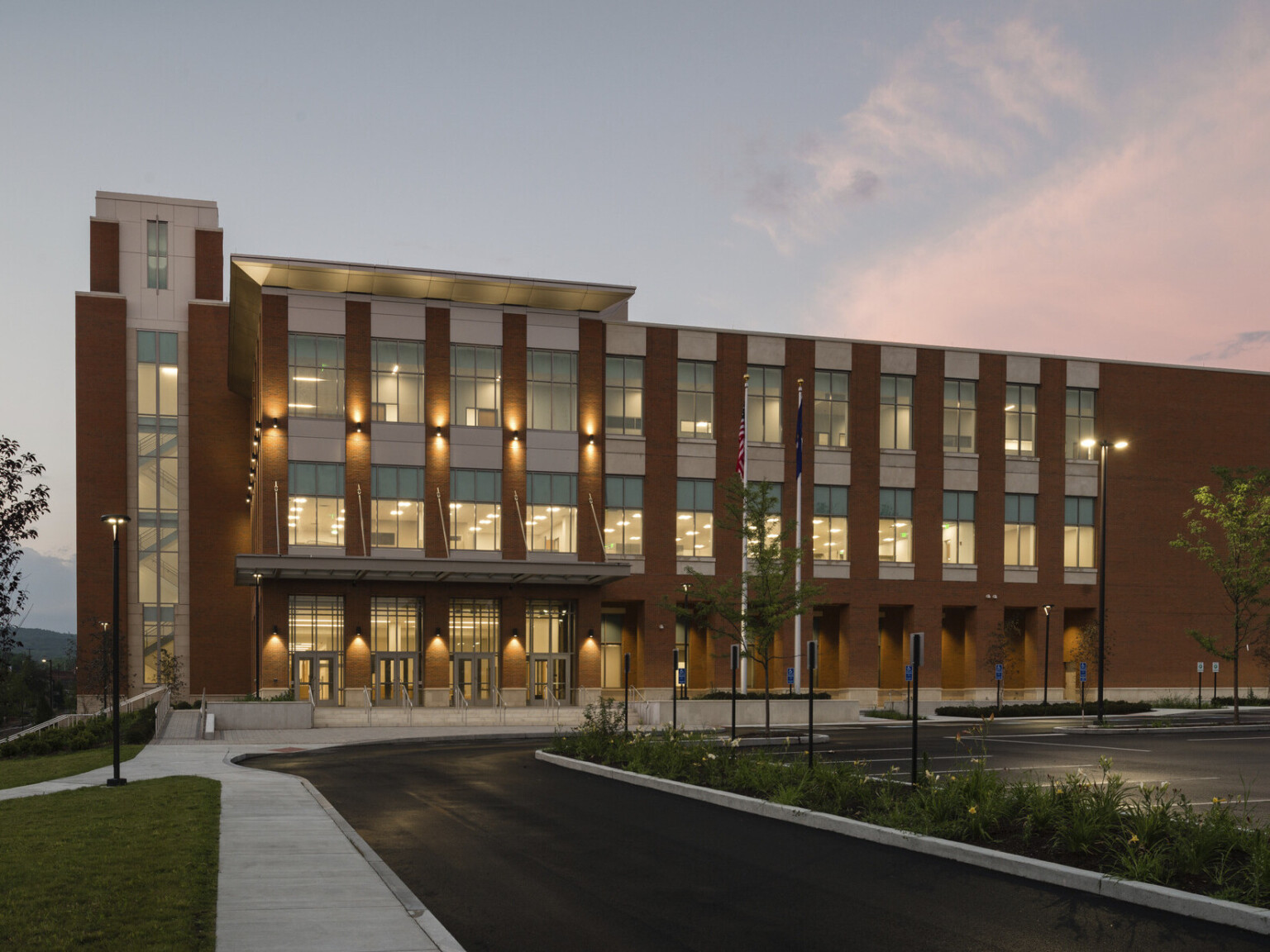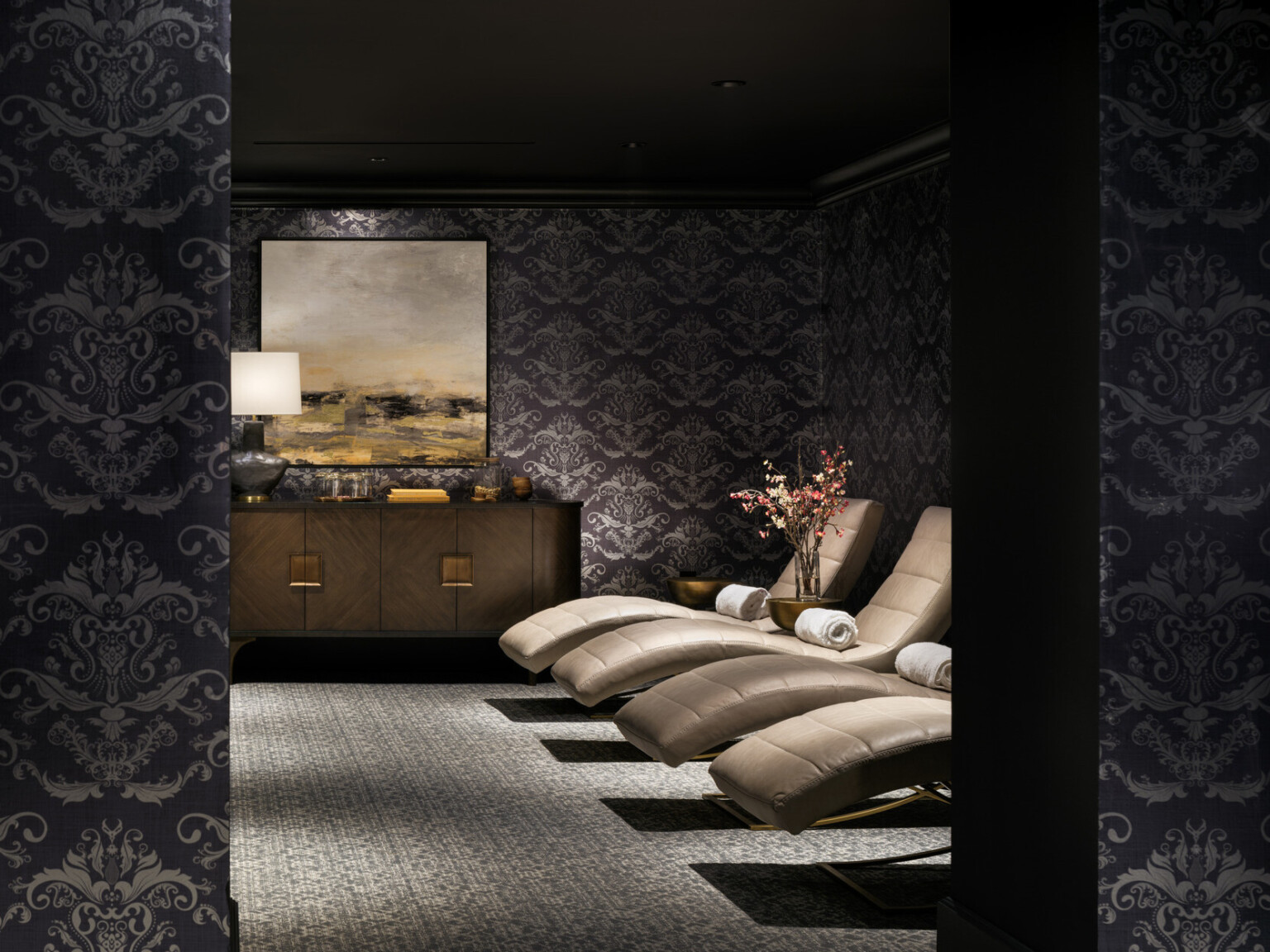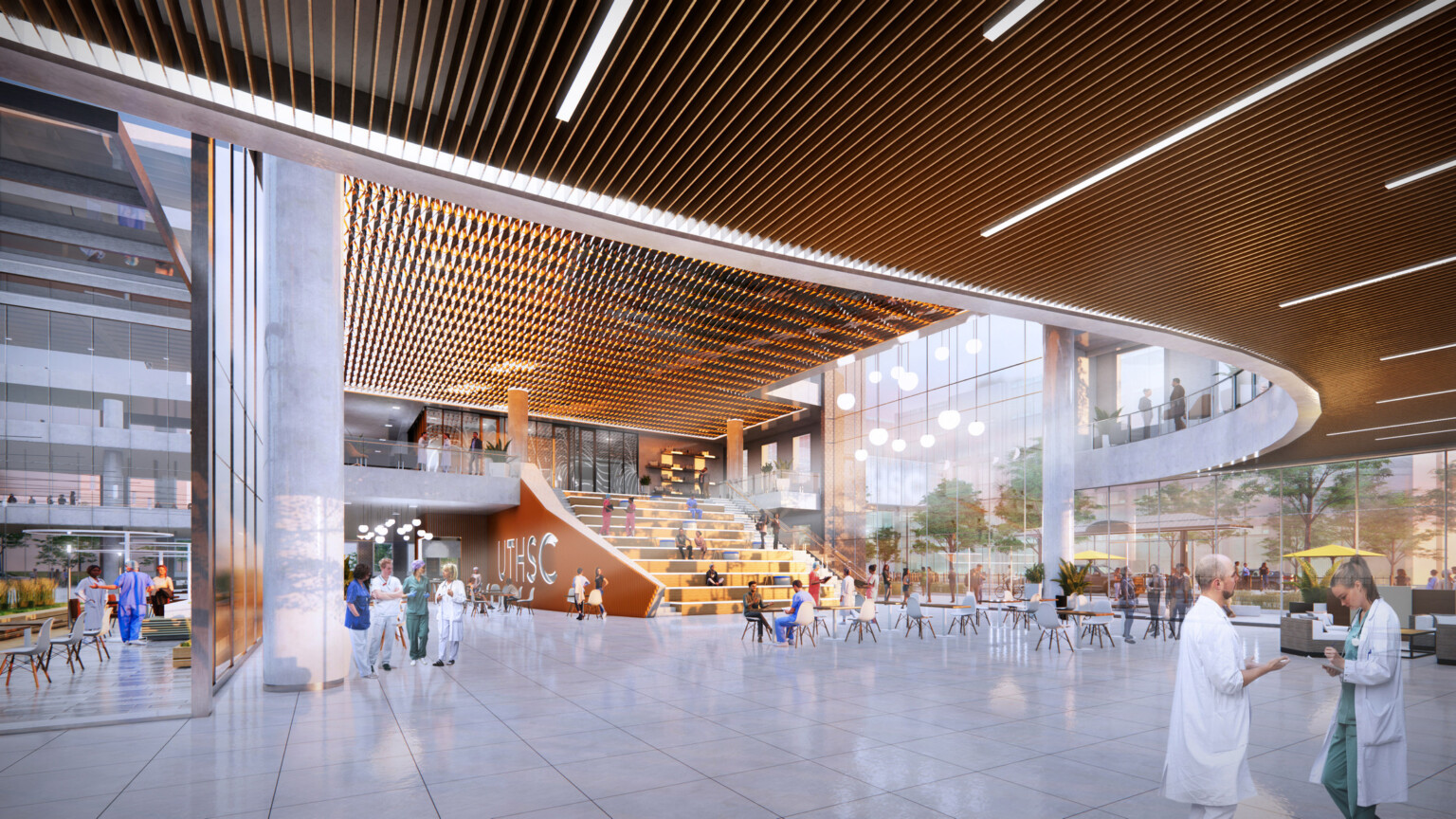
Urban Design on Campus
Six Elements of Urban Design
We draw from the following principles of urban design to create meaningful higher education experiences.
Creating Authentic Third Places
Collaborative learning, research, and innovation happen everywhere on campus. The key is to create authentic third places across the campus that foster spontaneous conversations, idea-sharing, interdisciplinary collaboration, and partnerships. Urban design plays a critical role in developing social hubs, dissolving academic discipline boundaries along major pedestrian corridors, and connecting indoor spaces with outdoor places. Creating space for “productive collisions” is a major impetus for campus improvements. During this time of constrained budgets and unanticipated demands, higher education institutions must address their backlog of deferred maintenance while they reposition buildings and grounds for 21st Century/post-pandemic futures. There are strategic opportunities in every campus design project to invent and reinforce third places within existing facilities. Through carefully orchestrated renovations and reconstruction that mix uses, add density, and connect people across departments, “we space” for sharing can become embedded across campus.
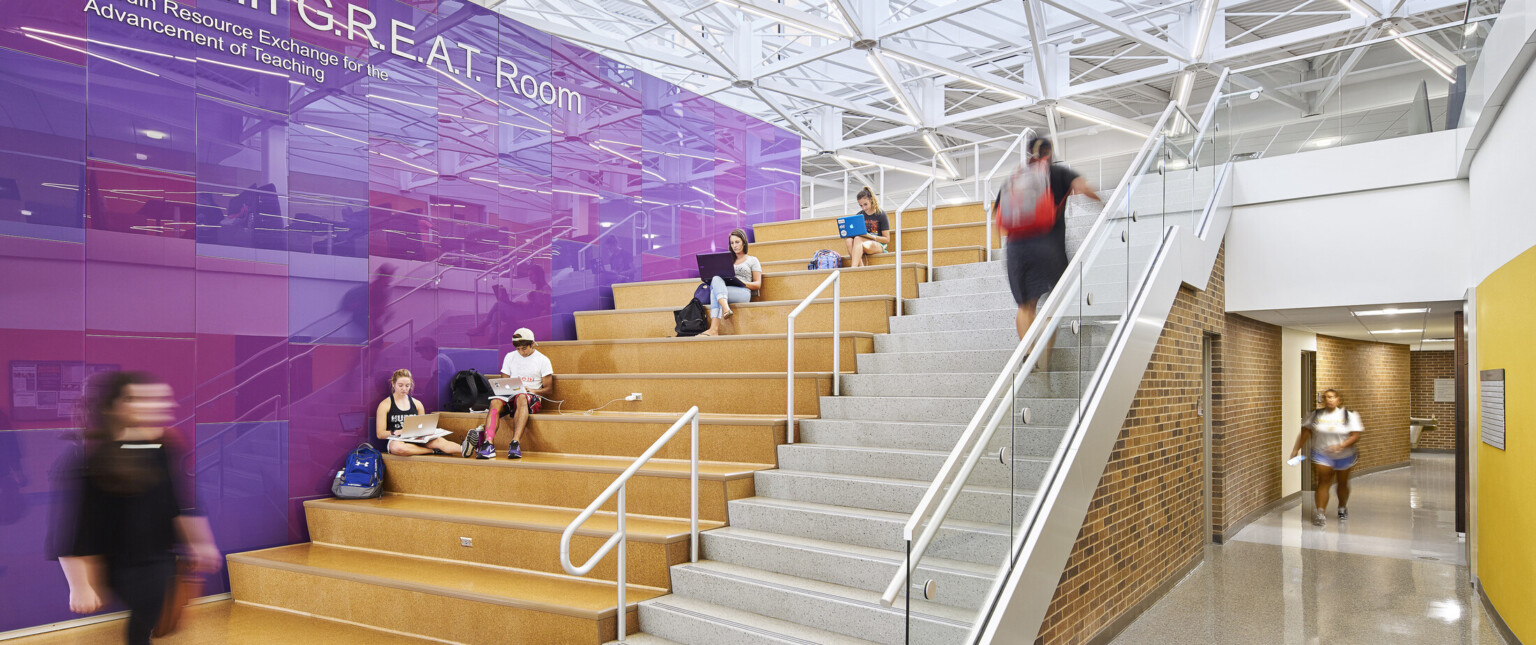
DLR Group’s design for the University of Northern Iowa’s renovated Schindler Education Center prioritized adaptability and connection by carving out space for informal learning in corridors and main thoroughfares. Photos by Michael Robinson.
Merging Campus Edges with the Surrounding Community
Cities and towns rely on the colleges and universities within them. Higher education institutions are major players in local economies, green space, and culture. The impacts of COVID-19 highlight the essential need for campuses to work together with their host communities. Shared interest and concern for safety and security, neighborhood retail, sports and arts amenities, support services, equity, public health, engaged learning and research, budget shortfalls, and overall quality of life are pushing institutions to take a more active role in their surrounding neighborhoods, municipalities, organizations, and businesses. The changing physical, financial, societal, and environmental context in the last two decades requires campus edges to be active, welcoming, and integrated with the community. With intentional campus design, town and gown can thrive together and create inclusive prosperity for students, faculty, staff, employees, and residents. Urban design principles provide a framework for exploring and evaluating scenarios that seamlessly merge the campus with the surrounding community through engagement, interaction, and partnerships.
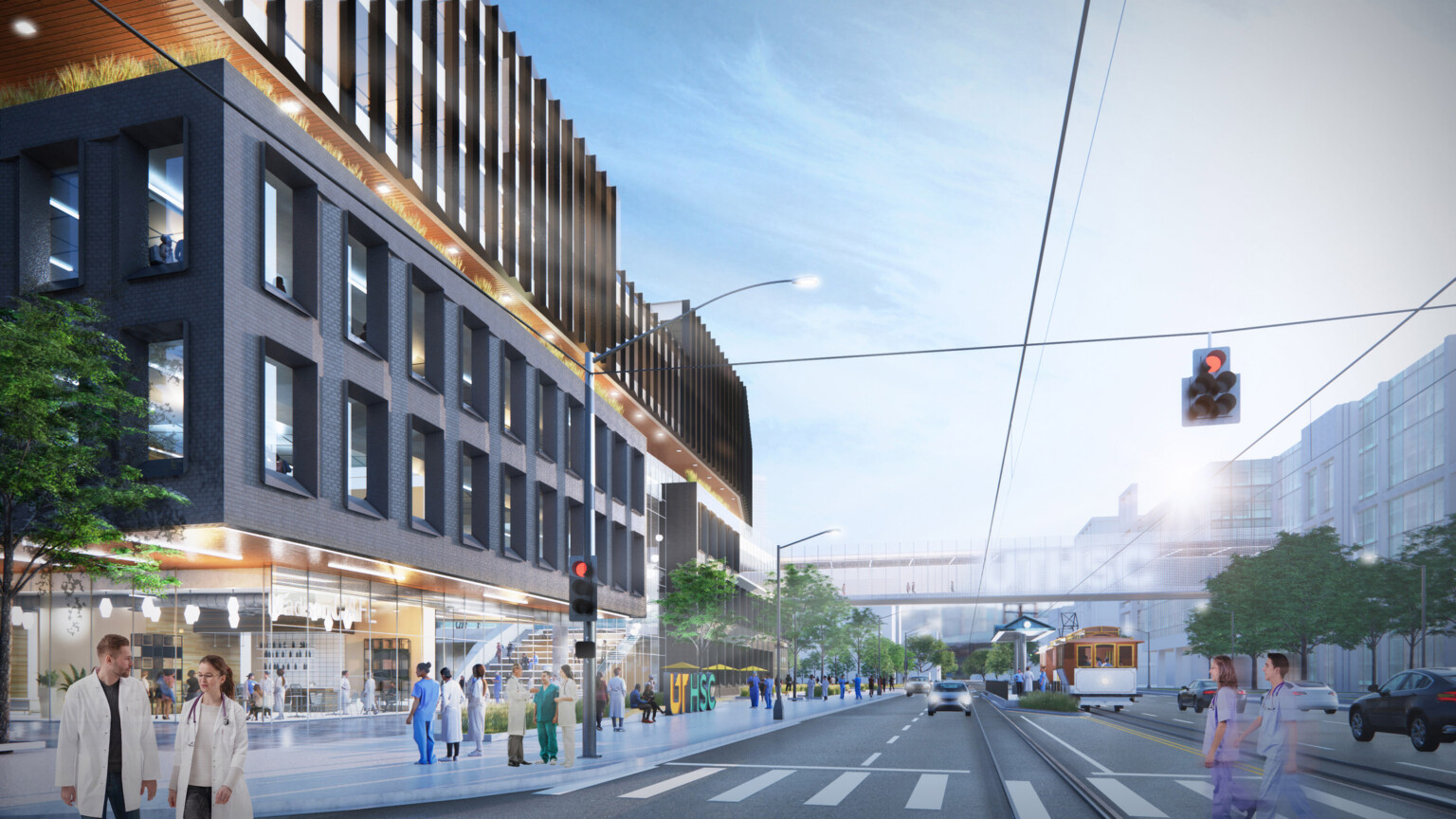
The University of Tennessee Health Science Center, new College of Medicine Building, Memphis, TN. Rendering © DLR Group.
Focusing on the Campus Landscape
Campus facilities and infrastructure are glued together by their landscape and open space structure. A variety and hierarchy of open spaces, activities, and programming are essential for campus vibrancy, placemaking, and learning. They provide opportunities for social interaction, free speech, cultural expression, respite, and recreation. Campus green space, including the avenue, green, quadrangle, residential courtyard, square, street, plaza, and promenade are part of our collective campus memory. Although they are often well-developed at the campus core, a campus-wide constellation of verdant spaces is a hallmark of the best higher education environments. The physical and mental health benefits of quality outdoor spaces are well documented. A seamless flow between buildings and their grounds, spaces with natural views, and access to daylight are ideal for learning. Higher education campuses that connect with their natural context and offer trees, water, wildlife, and trails reduce anxiety and increase a sense of well-being. A well-designed public realm that integrates signage and wayfinding, pedestrian lighting, and street furnishings brings a sense of safety, security, and place as it increases the quality of life.
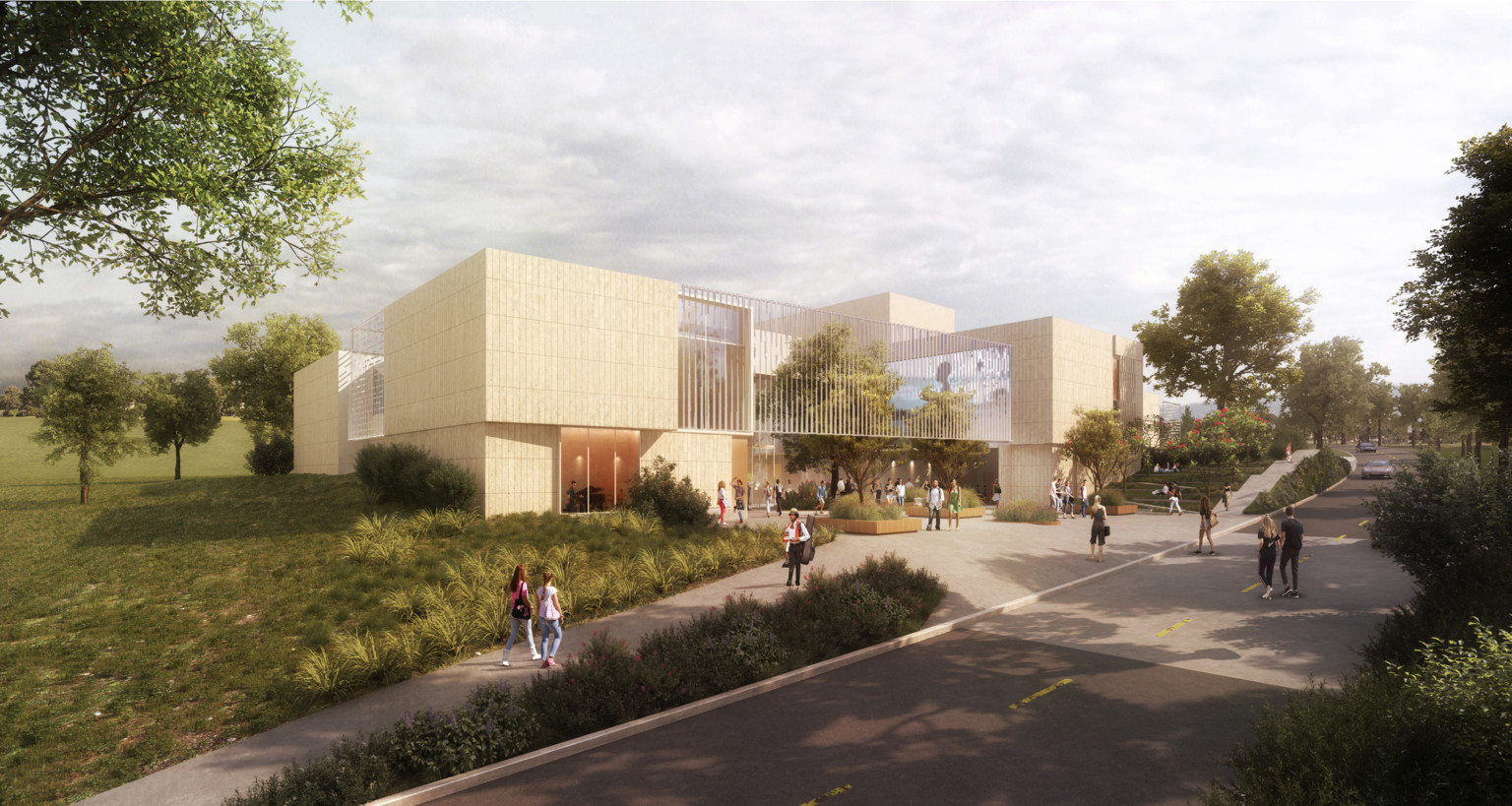
Our design for the Crafton Hills College performing arts center features a unique interplay between indoor and outdoor spaces. Rendering © DLR Group.
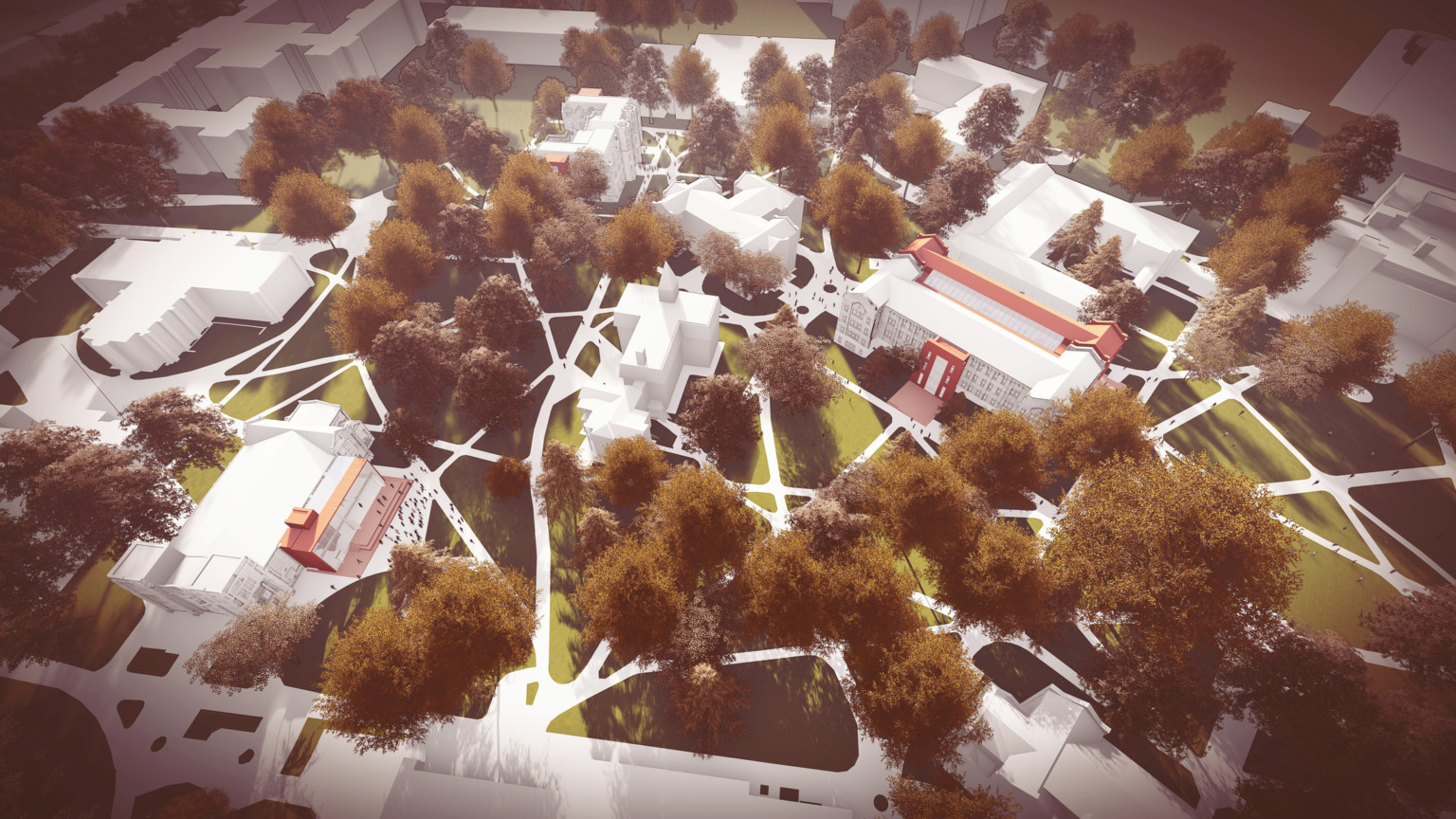
Our project with Vanderbilt University incorporates campus planning principles with a plan that focuses on the humanities buildings across campus.
Enhancing a Sense of Campus Community
Campuses with a strong character provide distinct places that encourage a sense of identity and belonging. Because the need to increase equity and ensure inclusion within the full campus experience is more critical than ever before, they create room for diverse communities to express themselves freely. To support a multicultural institution, the campus must have a welcoming spirit, flexible space for personal expression, and public art that embraces the rich diversity of all stakeholders. Students, fac Today’s higher education institutions face the combined challenges of maintaining an authentic campus character in the face of globalization, celebrating campus heritage, preserving historic buildings and grounds, uncovering hidden voices, facing difficult stories, and embracing new cultures and traditions. In response, good urban design provides a development framework that accommodates change, enhances the original organizing campus character, and ensures the campus identity remains intact as it evolves over time.
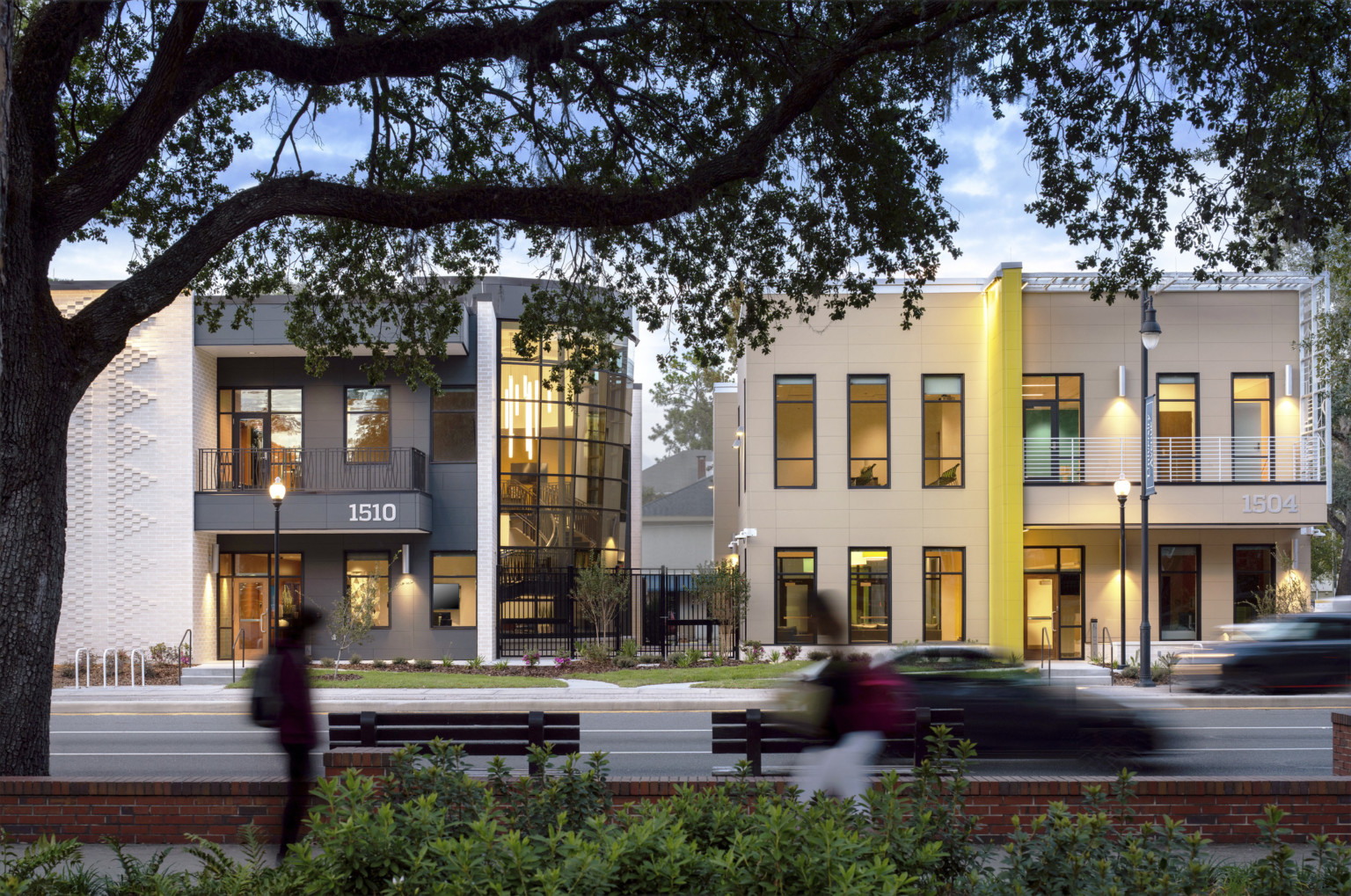
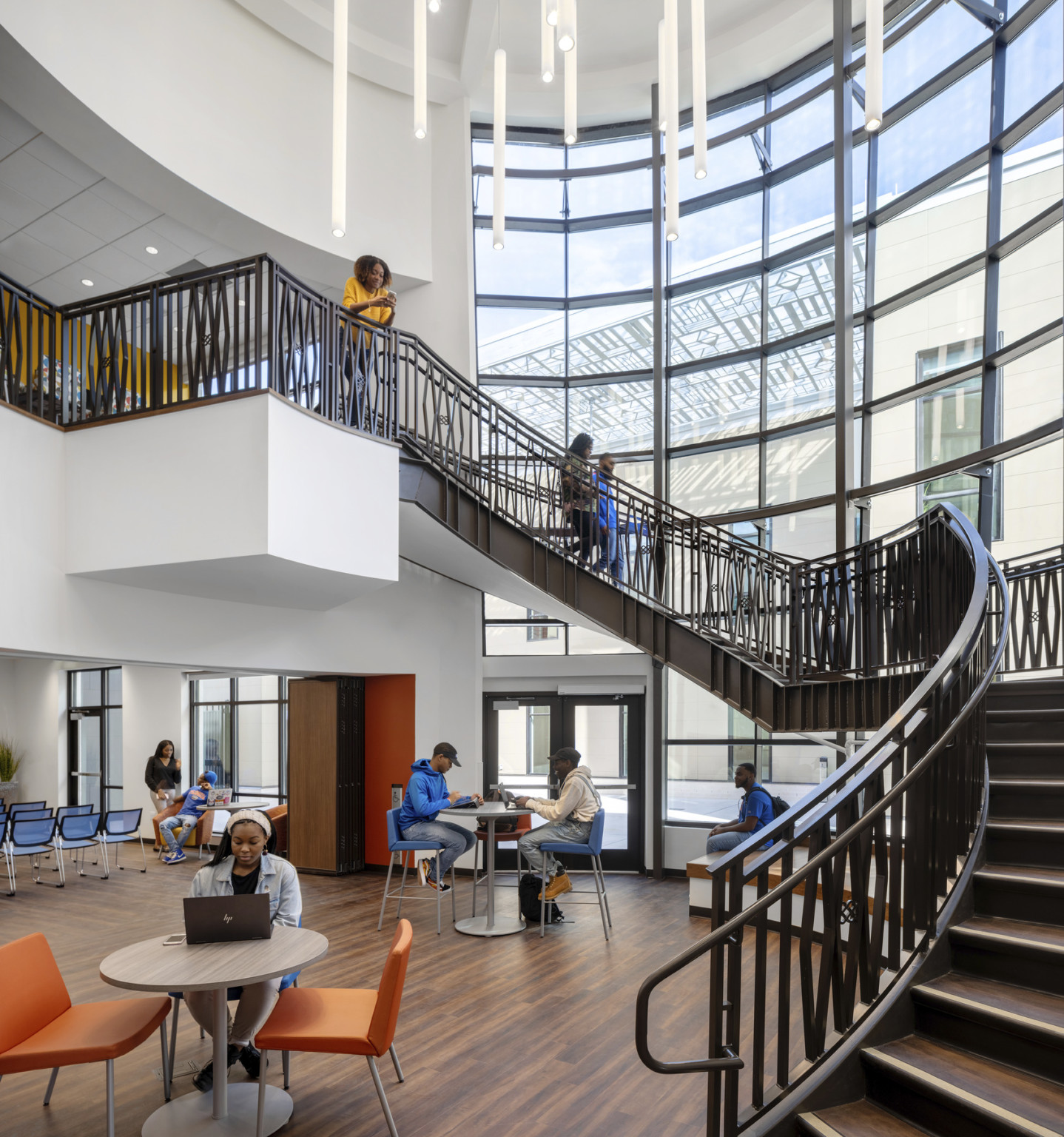
In our project with The University of Florida Institute of Black Culture and the Institute of Hispanic-Latino Cultures, we incorporated design elements that reflect the unique cultures housed in each space. Photos by Seamus Payne.
Building on a Human Scale
As higher education institutions look back over the 20th century, they see scars from automotive encroachments and inappropriately scaled buildings. Their original physical campus structure and sense of place need rebuilding; campus unity and harmony require restoration. In the 21st century, it is essential to reorganize existing patterns, redefine future growth, and recapture a lost sense of scale by creating a (re)development framework that activates the ground floor, includes a mix of uses, and provides a pedestrian-friendly and walkable experience. Urban design guidelines and standards that clearly articulate the relationship between activities, proportions, and materials are an invaluable part of the campus toolkit. As campuses struggle to reduce parking demand and cope with issues of pedestrian safety, students and communities demand new approaches to campus movement and mobility. Strategies that focus on Transportation Demand Management, transit, bicycles, and shared mobility to create a pedestrian-oriented environment are now a necessary component of campus planning and design. The “everyday” emergence of new “smart city” technology reinforces the importance of making the campus experience more human and personal through thoughtful design.

The proposed University of Tennessee Health Science Center, new College of Medicine Building, Memphis, TN. Rendering © DLR Group.
Thinking of the Campus as a City
Good urban design optimizes the ability of the campus to operate at a neighborhood scale. The pressure to use campus resources efficiently and effectively across all institutional property requires looking at the campus as a system of parts. Interconnecting campus planning and design issues resolves challenges and provides solutions that promote equity, inclusion, sustainability, resiliency, overall wellness, and mobility across all physical infrastructure. Urban design tools and metrics can measure and track both qualitative and quantitative aspects of the campus condition, capacity, and experience. Together with sound urban design principles, they can align institutional facilities, open space and utilities with mission, vision, values, programs, and finances. Comprehensive urban design strategies can help institutions visualize, evaluate, and implement the physical implications of strategic priorities. Because plans and policies have an impact on overall campus design, integrating urban design best practices delivers a campus environment that is essential for individual success, attracts and retains the next generation of students and faculty, and is scalable across the institution.

Our study with Vanderbilt University incorporates campus planning principles with a plan that focuses on the humanities buildings across campus.
Want to explore more of the principles that guide our planning work?
